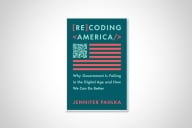You have /5 articles left.
Sign up for a free account or log in.
Having been away for a bit, I’ve had a chance to reflect on the changes in the political climate for public higher education over the course of my career.
When I started in the community college world in the early 2000s, I saw them as fully mature institutions that had been around forever. If anything, they felt a little stodgy, and I saw trying to modernize them as part of my mission. The first time I attended a conference of the League for Innovation, I remember being struck that some of the senior leaders still referred to “the community college movement.” The phrase landed sideways with me; as I saw it, community colleges were no more a movement than post offices were. They were simply parts of the landscape, and their major challenges, other than funding, were internal.
(Funding has always been a challenge. Some things don’t change.)
After the Great Recession, the funding challenges grew more severe, and I saw a new emphasis on workforce-related programs. STEM fields drew more attention. The transfer mission started to get upstaged by workforce development. And graduation rates got much more stage time. If you had asked me in 2008, after five years as a dean at the County College of Morris, what its graduation rate was, I couldn’t have told you. The question never came up. By the early 2010s, graduation rates drew much more focus.
The new focus on quantifiable student success was mostly positive, though any single measure can bring with it its own distortions. (Ask any senior community college leader about the accuracy of the IPEDS graduation rate and be prepared for a rant. It wasn’t built for us—and it shows.) This was the heyday of guided pathways, developmental education reform and performance-based funding. This was also a period of rapid growth in online education, which was widely studied, and dual enrollment, which was not.
The common denominator, in retrospect, was economic scrutiny. Colleges were increasingly judged by how much they charged and how much their students subsequently made in the market. This was when the student loan explosion became part of the discourse. Some of us noted in public, repeatedly, that loan default rates were inversely related to the amount owed, but that basic fact never quite broke through to the public. It should have. Taken seriously, it would have upended much of the discourse. Alas.
We were tasked with solving a bifurcating economy. We couldn’t, but we shouldn’t have been expected to.
Five years ago, 2020 brought the disruptions of COVID and the murder of George Floyd. Suddenly, “Zoom” became a noun and a racial equity lens a requirement. My earlier wish for modernization was granted with a vengeance. The losses of the pandemic were awful, but some of the adaptations we developed had lasting value. The taboo against working from home suddenly seemed a bit musty; it turned out that people actually could, and would, get work done outside the office. This period brought greater attention to student basic needs, such as food pantries, transportation subsidies and mental health support, all of which made it possible for students from more challenged backgrounds to succeed. The community college movement may have faded from memory, but the #RealCollege movement gained ground.
Externally, though, resentment at COVID restrictions and the new focus on racial equity led to a populist backlash against any institutions associated with expertise, the professional class or equality. Community colleges started to suffer collateral damage.
In 2025, that backlash has hit levels I wouldn’t have dreamed in 2003. The external climate is, by far, the most hostile I’ve seen in my career. Grants and support programs are being canceled, uncanceled and canceled again, seemingly at a whim. Suddenly it’s dangerous to support, say, a program to recruit women to STEM careers. The attorney general of the United States has informed us that programs to support first-generation college students are proxies for discrimination and are presumptively illegal. A few years ago, if you had told me that, I would have assumed you were kidding. Yet here we are.
It’s a much harder time than it was even just a few years ago. But my time away also gave me hope and a new appreciation. Community colleges at their best are wildly aspirational. They perform decency—an underrated virtue—at scale. As a long-forgotten speaker once put it, they offer first chances, second chances and last chances. They’re open to everyone, staffed by people who accept lower salaries than they could because they love the mission. They prepare students for jobs, yes, but also for citizenship and even for personal growth. They stand as living monuments to dignity, with the mission of helping everybody reach their goals regardless of how they got there.
In a society that has become increasingly isolated, transactional and angry, community colleges embody respect for everyone on a daily basis. They assume that talent comes in every flavor and that everyone deserves a chance. They operate on shoestrings, but they provide lifelines. I missed that. And I’m thankful to be a part of it. We’ve always had students to teach. Now we have an entire culture to teach by example.



